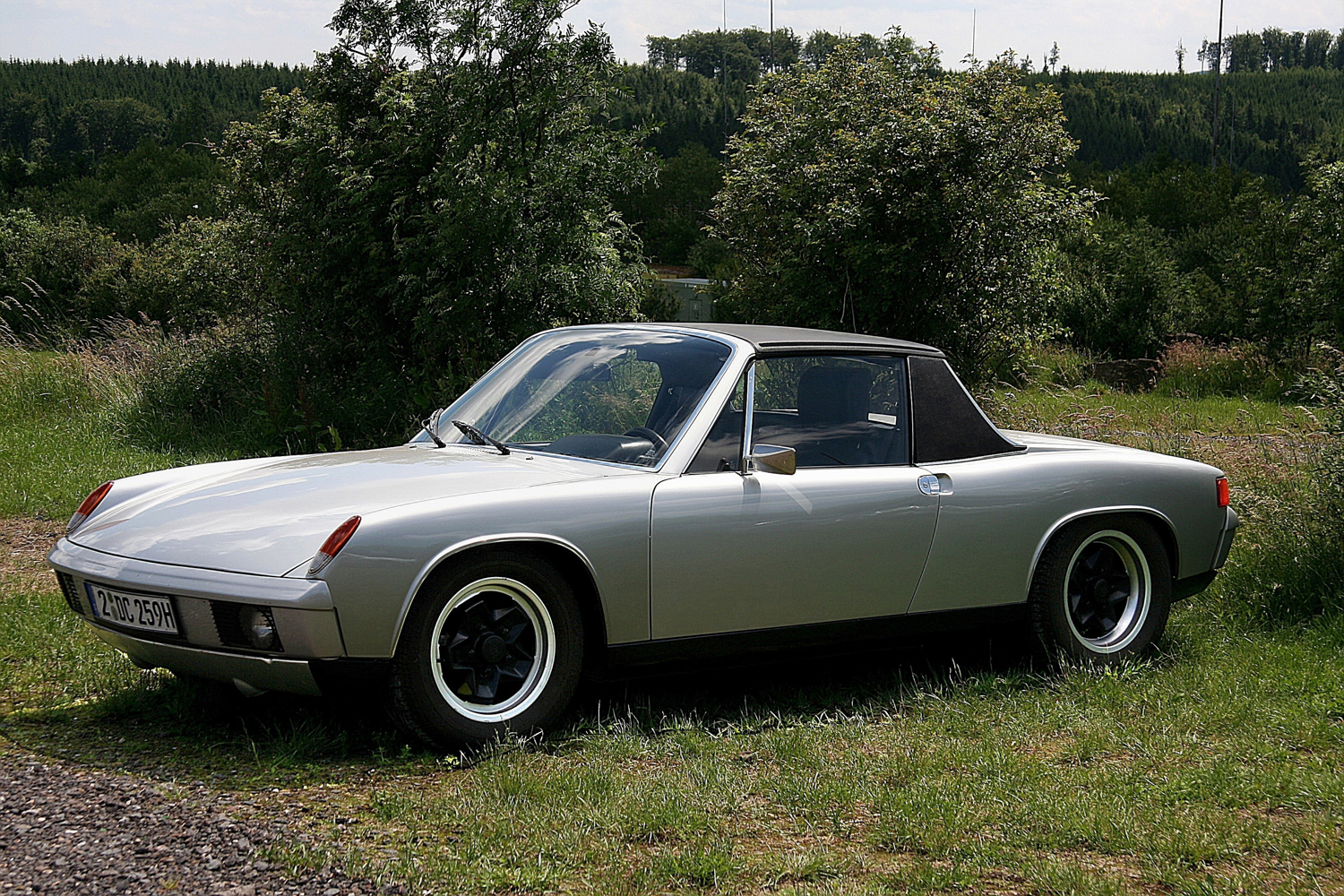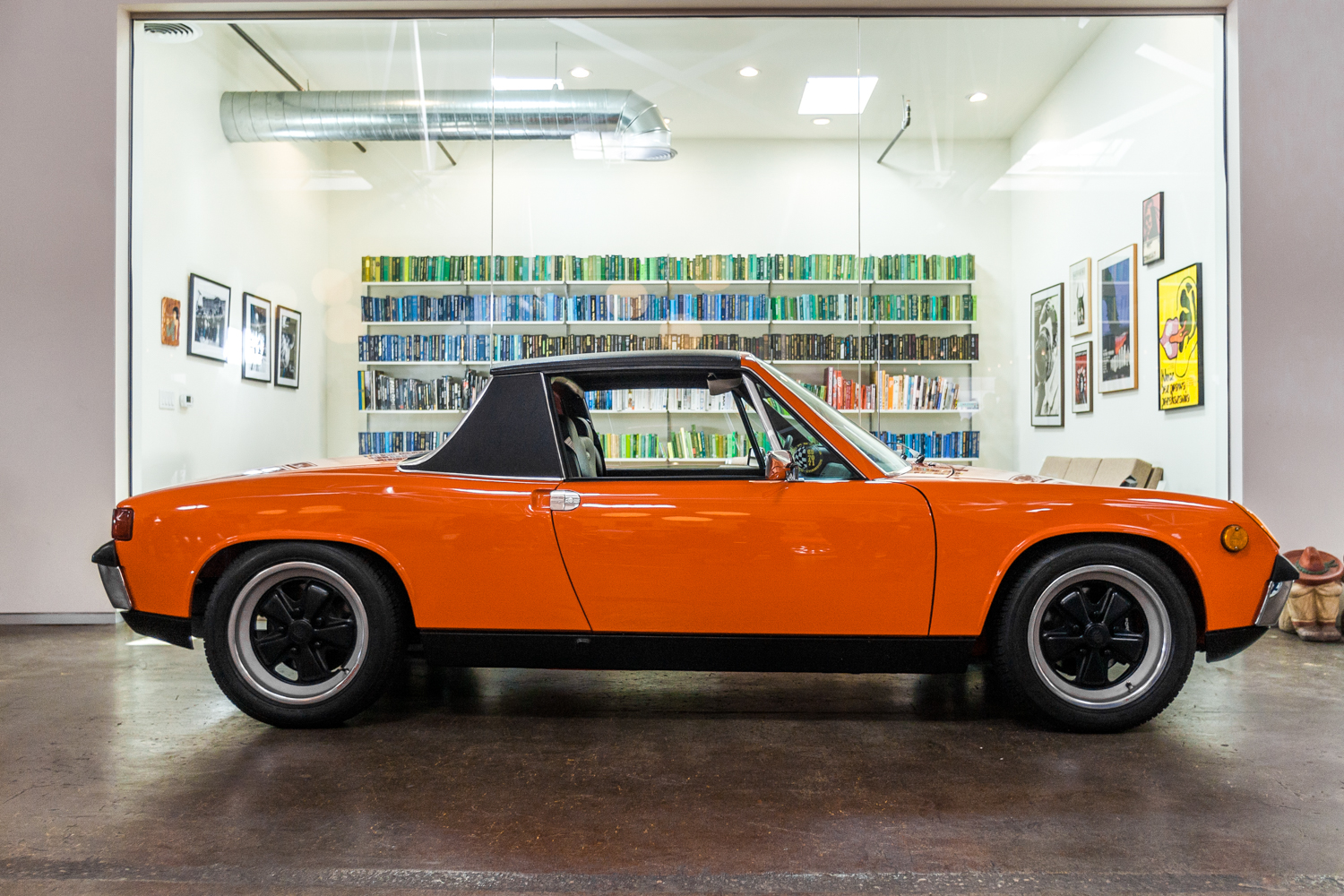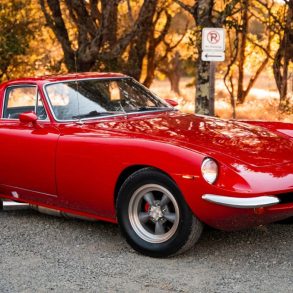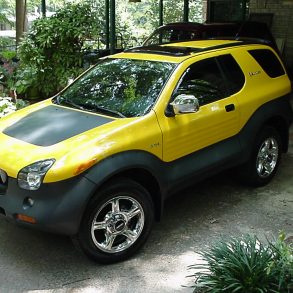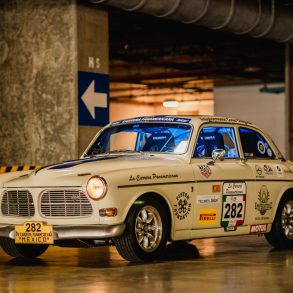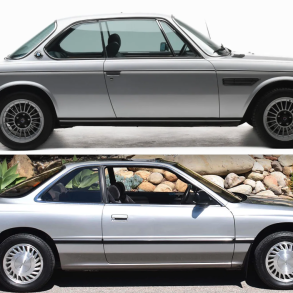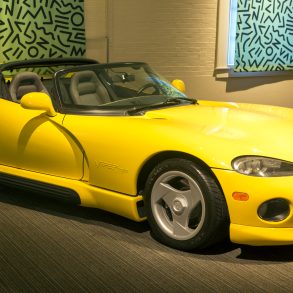The Steelers Wheel 1973 pop tune “Stuck in the Middle with You” could very well have been the theme song for the Porsche 914. Though the 914 was originally released in 1969, four years before the song would top the pop charts, by 1973 the 914 found just the right balance of performance with the 2.0-liter powered 4-cylinder 914. Taking the helm as the first German built, volume production, mid-engine car, the 914 would go on to become a critical component to the growth of the Porsche brand.
The Porsche 914 arrived on the market just in time. Both Porsche and VW were desperate for new product offerings as pressures were building to replace aging platforms with the latest in technology. As part of their agreement to develop new products for VW, Porsche was tasked with the challenge, sharing development for a mutually beneficial platform that would serve the volume needs of Volkswagen. Both companies intended to launch their own unique variants, so the platform would have to serve as the more spartan four-cylinder VW, while the six-cylinder 914-6 would be the more feature-rich performance offering for Porsche. Plans changed, however, when Porsche’s quest for perfection resulted in a much higher priced platform, one that VW could not swallow. VW bowed out, leaving Porsche to absorb both cars as part of their lineup. Cleverly, if not stoically, Porsche concurrently released both the 914 and 914-6. The upside would become one of the best moves for Porsche, allowing new enthusiasts to become hopelessly ensnared in the albeit glorious web of Porsche ownership. The lower cost 914 brought in new buyers, while satisfying the Porsche purists with the 914-6 as the more sought-after performance model. Surprisingly, the lower cost 914 sales were orders of magnitude higher than 914-6 sales, a fact that prevails today, in reverse, with far higher values for the rarer 6 in the vintage Porsche market.

While much of automobile design generally centers around the visual appearance of the body lines, the design of the 914 was highly influenced by the engineering of the inner structure. The 914 platform was exceptionally well built, superbly engineered, and remarkably safe. Taking advantage of engineering advances in body design, impact protection and newly developed studies around metal deformation under impact loads, the front and rear sections of the 914 body were engineered to become easily deformable crumple zones when collapsing under impact. The passenger compartment was designed as a deformation-rigid safety cell, while both the front and rear were designed to accordion under folding loads, reducing the forces of impact as those loads migrated towards the rigid safety-cell. The steering column provided the driver with better protection on frontal impact, and the mid-engine layout stepped away from the nagging weight transfer issues which had formerly troubled the 911, and the 356. Given the growing popularity at the time of the 1966 seminal car safety best seller “Unsafe at Any Speed”, by Ralph Nader, it was important for Porsche to establish a new offering that wasn’t rear-engine. Surprisingly spacious inside, the 914-6 platform accommodated a large driver, offered considerably more luggage space in the front storage area, and all models came with the distinctive removable Targa roof.
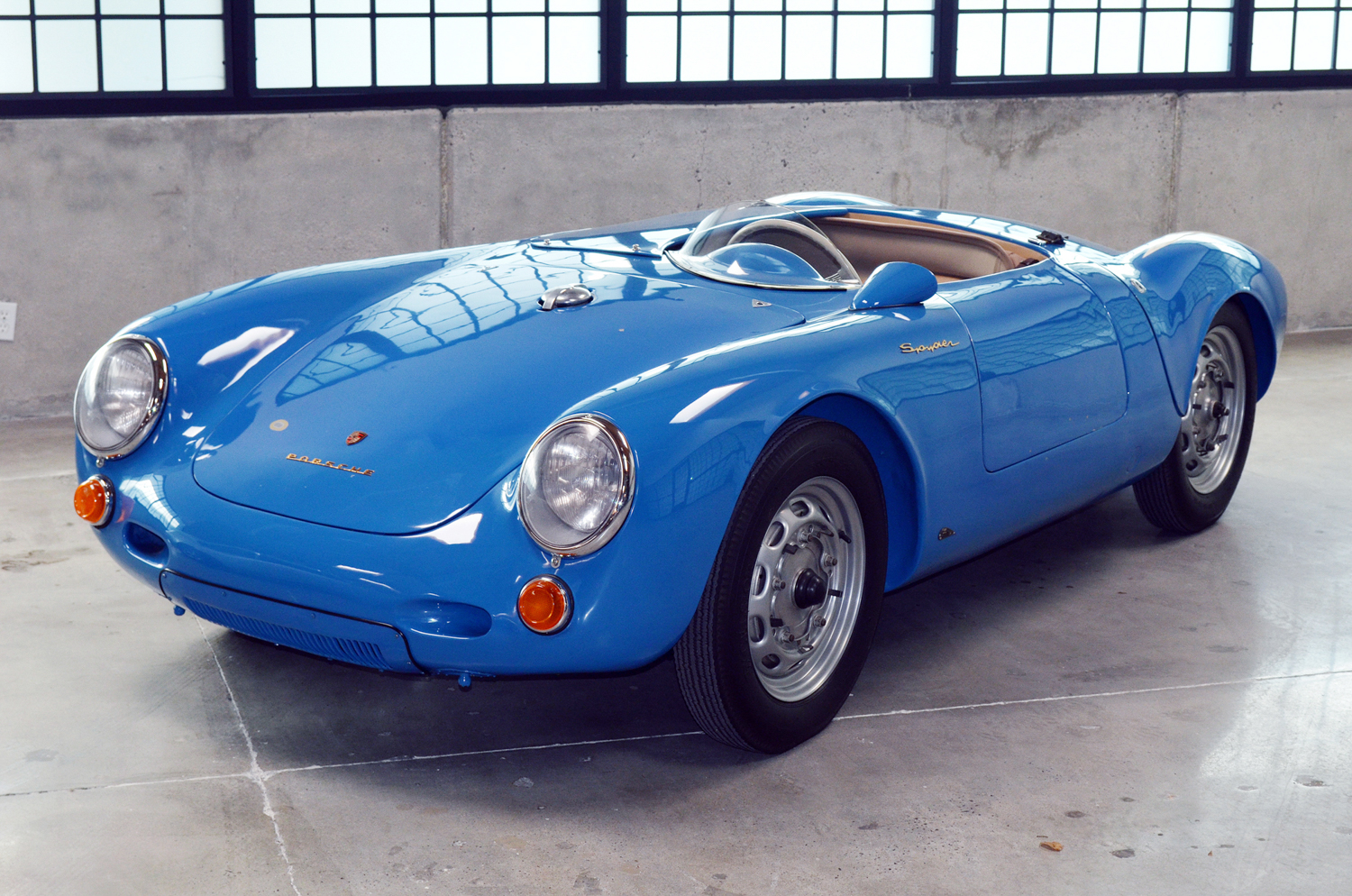
The 914 wasn’t the first mid-engine Porsche offered to the public. That distinction goes to the 550 Spyder. Built as a racecar for the street, the 550, while dynamic and beautiful, was an engineering relic of the past when compared with the features of the 914. Thankfully, by this time, the 550 was shedding its association as the gruesome partner to the 1955 demise of icon James Dean. Although the 914 was both a risky and technologically expensive move for Porsche, this move paid off handsomely as the 914 sold nearly 120,000 units worldwide, a vast majority of which were powered by the 4-cylinder engine originally intended for VW. Not only did the 914 win sales, it won major victories in competition as well.
Given the economical price when new and subsequently lower price when used, the 914 continued to make its mark through the 1970s and early 1980s as a suitable subject for modifications, custom treatments, and professional rebody efforts by coachbuilders and independent custom shops. For years, regarded as a lesser Porsche, in the late 1990s, Porsche revisited this same theme with introduction of the Boxster, a car that would also launch Porsche into critically needed market expansion – a subject worthy of separate review.
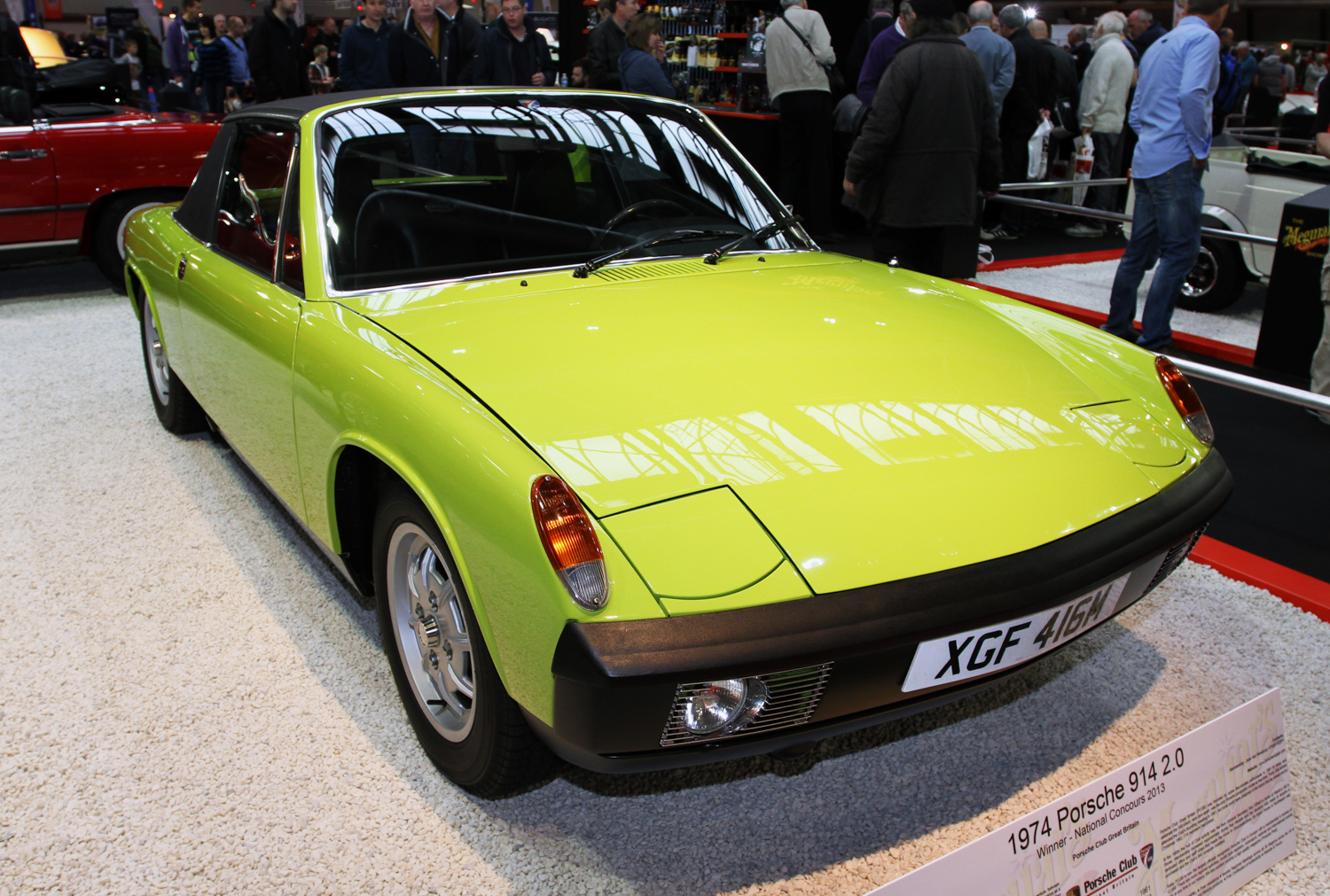
Looking at the 914 today, it’s hard to imagine just how revolutionary this design was when released in 1969. Remember that Porsche was developing the 914 a few years earlier so even advanced concept cars of this period were nothing near the platform or body design of this car. Perhaps one of the last and most successful expressions of the German Bauhaus movement (combining mass production processes with artistic expression), the 914 design is dictated by adherence to the edict “form follows function”. Even in earlier iterations, the beltline was very low to the ground, front and rear overhangs were proportionally balanced, and the 48” height was disguised quite well, in part due to the 65” width. Though not a wide car by modern standards, the 914 width was just 5” shy of the massive Lamborghini Miura, carrying three times the cylinders in transverse orientation. The benefit of these proportions, 914 had a surprisingly low, aggressive width-to-length, performance stance. This low belt line and tall roof line allowed for ample frontal visibility from the upright cockpit position with rear visibility hampered only slightly by the large trailing sail panels rising to form the Targa bar.
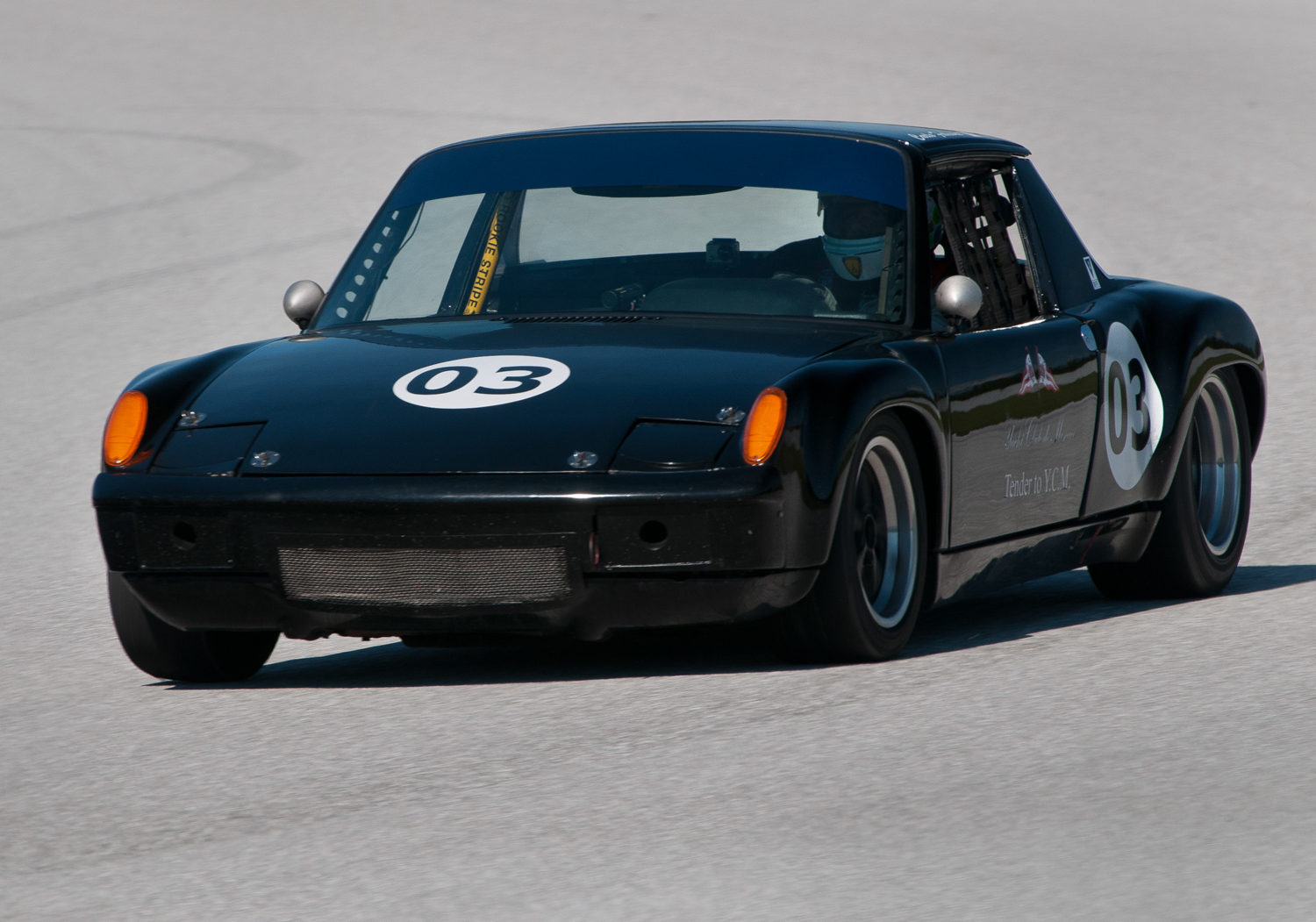
Though the 914 design was radically different from the 356 and 911, it still carried Porsche legacy traits including the lowered rear wheel arch (from the 356), gently trimmed wheel arch lips, and clean body sides. Although earlier clay studies featured more crisp design lines, the resultant evolution had a more distinct “melting” of form that both the 356 and 911 gracefully achieved without appearing deflated. The 914 offered little in the way of trim or fussy exterior accessories, with the front and rear bumpers becoming more of a visual statement than many would have preferred, but this was a condition of rapidly evolving bumper impact laws.
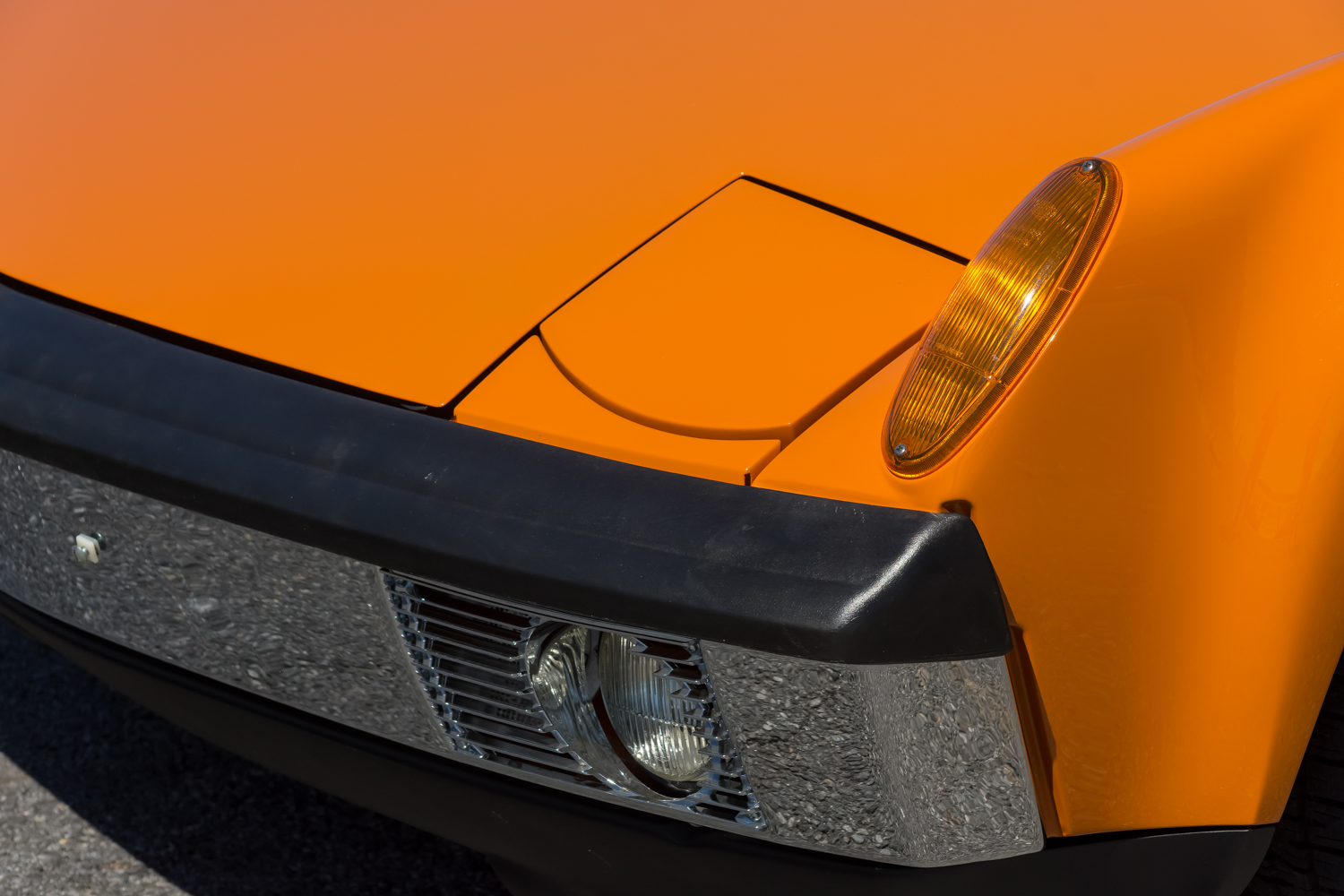
Finished in bright colors, the side profile stance and visual heft was greatly reduced by satin black rocker panels and the vinyl clad sail panels, which gave the 914 the visual impression of a fully removable convertible top. In yet another unique feature, the pop-up headlights were effectively dropped below the bladed front fender line, which is pulled up to elongate the front of the car, giving the profile a very forward reaching appearance, contrasted by a slightly lower rear fender line, both design traits captured in the 356 and 911. The taillight signature echoed the 911, featuring clean rectangular corners and minimal indication of brand or displacement.
Visually distinct, historically important, and recognized today as a critical offering key to the success of the Porsche brand, the 914 remains a celebrated example of the harmony that can be achieved combining engineering and design. Modern vehicle design is now far more complex and challenging than it was in the 1960s, but with a reasonably optioned Boxster now priced at $70k I can’t help but wonder if the market for a new iteration of the lower cost 914 still exists today. Perhaps Porsche is working on an entry level electric powered mid-engine 914 for tomorrow? If so, sign this author up for the first one. I’ll be sure to have Gerry Rafferty playing on the first drive.





